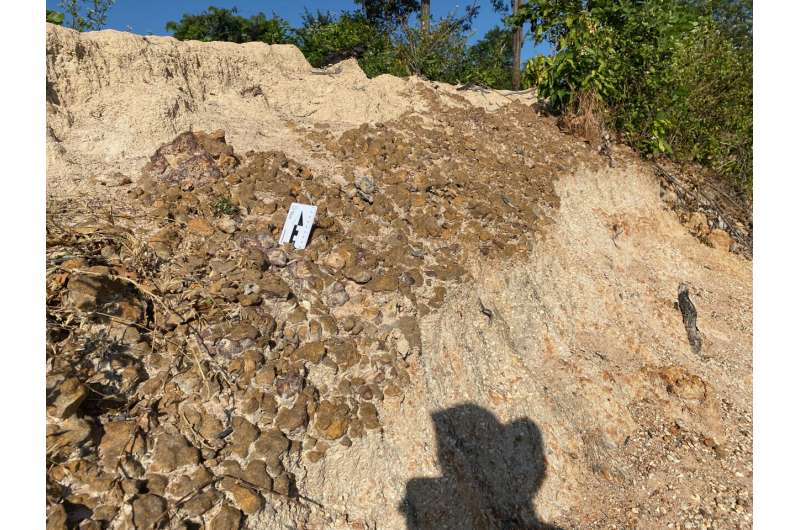December 6, 2023 report
This article has been reviewed according to Science X's editorial process and policies. Editors have highlighted the following attributes while ensuring the content's credibility:
fact-checked
peer-reviewed publication
trusted source
proofread
Making the case for the location of the Bolaven extraterrestrial impact crater

A multi-institutional team of geoscientists, geologists and mineralogists has found what they believe to be the site of the crater formed from the Bolaven extraterrestrial impact. In their paper published in Proceedings of the National Academy of Sciences, the group describes their multi-year study of tektites and other ejecta believed to have been associated with the Bolaven extraterrestrial impact in southern Laos.
Prior research has suggested that approximately 800,000 years ago, a large meteorite struck what is now a part of the Bolaven Plateau in southern Laos. The strike is believed to be the last major impact on Earth by an asteroid. It is also believed that when the impact occurred, a massive amount of ejecta was strewn across parts of southern Laos and eastern Thailand.
But oddly, the location of the impact has never been positively identified—the crater, researchers believe, has been hidden by tree growth, a blanket of soil or both. In this new effort, the research team attempted to find the location of the impact by inferring its position using characteristics of tektites.
The researchers began their effort by studying the results of other studies on the impact or its crater. They became convinced that the crater had not been found because it had been filled with lava. During the years 2015 to 2023, the research team conducted field research, collecting tektites believed to be from the Bolaven impact and marking on maps where they were found. They found not only small samples that would fit in the hand, but large deposits up to 9 meters thick.
The maps indicated a radial pattern of thickening ejecta that converged around a single plateau—a clear indication, they claim, of the site where the asteroid crashed into the Earth. More research is required, most likely at or near the vicinity of the proposed impact site—but the research team is confident they have found it, calling their results "all but definitive."
Correction note (12/6/2023): The impact occurred not 80,000 but 800,000 years ago.
More information: Kerry Sieh et al, Proximal ejecta of the Bolaven extraterrestrial impact, southern Laos, Proceedings of the National Academy of Sciences (2023). DOI: 10.1073/pnas.2310351120
Journal information: Proceedings of the National Academy of Sciences
© 2023 Science X Network



















